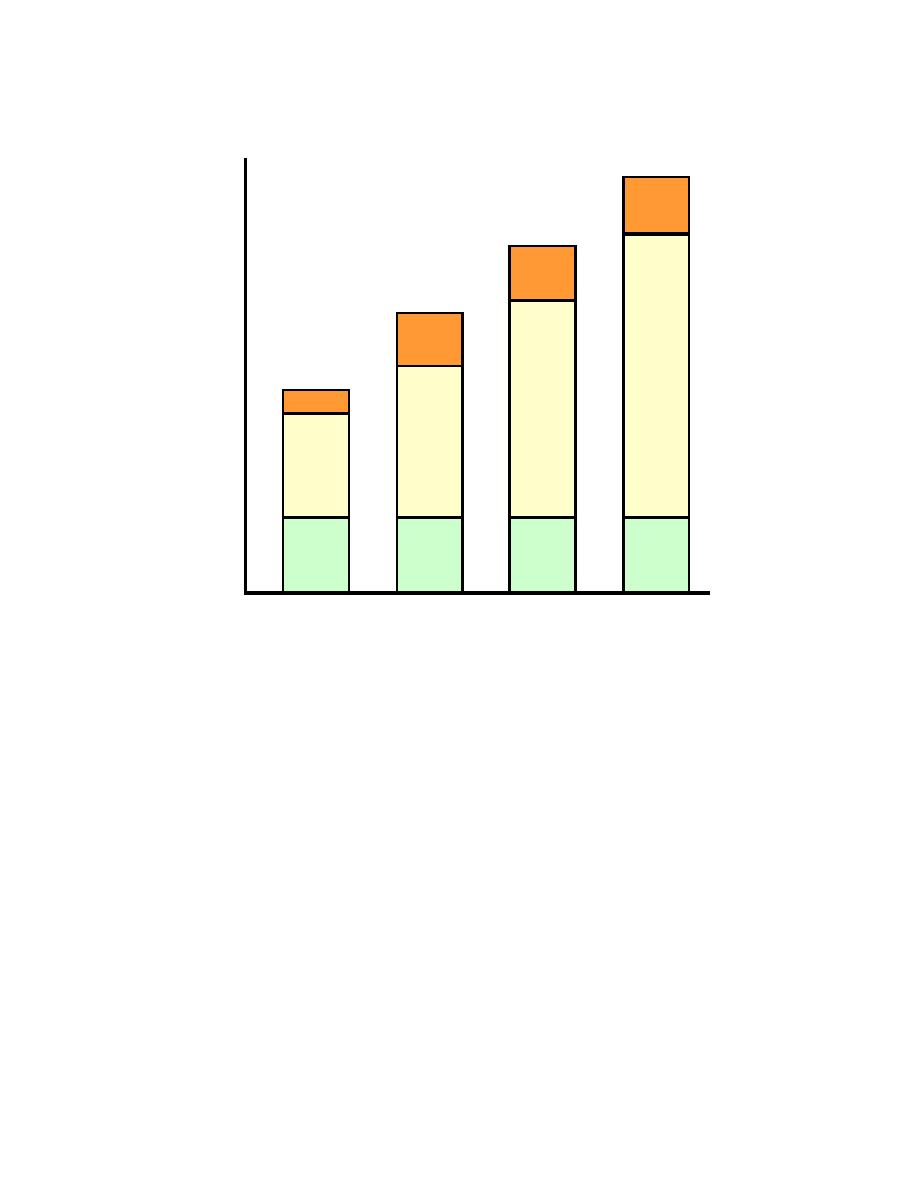
UFC 3 -520-01
June 10, 2002
Figure 4-1. Insulation System Ratings
30C
Hot Spot
200 C
Allowance
30C
Hot Spot
Allowance
30C
Hot Spot
150 C
Allowance
Temperature
Rise
115 C
Temperature
10 Hot Spot
C
Rise
100 C
Allowance
80 C
Temperature
Rise
55 C
Temperature
Rise
Ambient
Ambient
Ambient
Ambient
Temperature
Temperature
Temperature
Temperature
Allowance
Allowance
Allowance
Allowance
40 C
40 C
4 0 C
40 C
0 C
Class 105C
Class 150 C
Class 185 C
Class 220 C
4-1.3.3 The kVA rating and the insulation system rating are related. Select the
desired kVA rating or insulation s ystem based on the following considerations:
Relative loading--transformers loaded at or close to their kVA ratings will operate
hotter than transformers that are lightly loaded. A higher kVA rating can be selected
just to ensure that the transformer operates cooler to avoid long -term thermal
damage.
Duty cycle--the duty cycle might have the transformer fully loaded most of the time
or lightly loaded most of the time. The transformer kVA rating has to be capable of
supplying the system full -load current, but the capacity margin can be lower for
lightly loaded duty cycles.
Ambient temperature--the average and maximum ambient temperatures at the
installation location must be determined (or estimated) as part of the selection
process. If necessary, increase the kVA rating or insulation system class to reduce
the degree of thermal damage at higher temperatures.
4-1.3.4 Unless there are special application or environmental requirements,
transformers rated 15 kVA or greater should have a Class 220 insulation system.
Transformers rated less than 15 kVA should have a Class 185 insulation system.
4-3


 Previous Page
Previous Page
